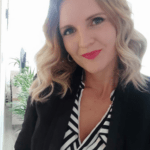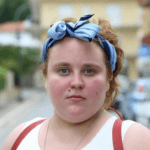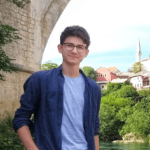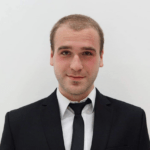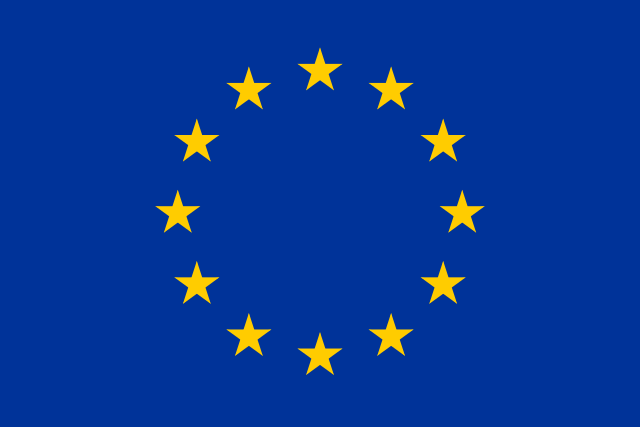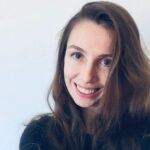In Check Fake! I did not only learn a lot about disinformation and what to do when I recognize it, but even more importantly I made lifelong friends and a strong collaboration network. The existence of the network inspired us to start our own youth NGO, Aurora Youth Finland, and apply funding for our own ideas.
Don’t believe everything you are told! During a week-long youth exchange, 36 participants from 6 countries (Finland, Belgium, Turkey, Greece, Ukraine and Slovakia) learned how to spot fake information and potential online dangers. To share their findings, they produced guidelines on the techniques used by hoaxers to fool us, and how to stay safe!
Participation of young people in these kinds of projects needs to be as active as possible. Nonformal learning methods enables them to get more deeply involved in the subject and encourages more sharing. It’s also very important to offer young people some opportunities to demonstrate what they’ve learned.
Project Coordinator Diana Jašeková shared some insights with us about this valuable youth exchange programme:
How did this project begin?
We are an organisation from the small town of Trnava in Slovakia, whose mission is to inform young people about a wide range of local and international opportunities in business, entrepreneurship, career development, volunteering and so on. Many of the youngsters who take part in our workshops have great ideas for new projects, which is how Check Fake! came about. Ahead of some local parliamentary elections, we were approached by a group of high school classmates who were concerned about unreliable news sources. It seemed a perfect time to address the topic, so we suggested they organise their own youth exchange project!
How did you prepare for the project?
We created a working group to support youngsters in the project application phase. We taught them how to host a group, how to structure the project activities across the week and how to apply for funding. We helped them to shape their ideas and advised them on the best ways to deliver some of the more complex information. They all did a great job! The project application was well written and got immediate approval.
Who were the young people involved in the project?
Obviously we wanted to invite young people who are really interested in the topic. It was a great opportunity to introduce newcomers to Erasmus+ projects, as well as those who were more experienced. By targeting 18-28 year-olds for Check Fake!, we aimed to include a wide variety of backgrounds, from working people and university students to those who were still in high school. We also had participants with fewer opportunities who were potentially more influenced by online information sources and could really benefit from the project. For example especially those living in rural areas had very little information about the importance of fact checking. They told us that they were even judged by their friends and family who rarely questioned the truth content of any information found on the internet.
How did you select your partners?
Our partner organizations were selected based on the recommendations of partners we already collaborated with and we used Otlas, the partner-finding tool of SALTO.
How did you design your schedule?
We began with games and icebreakers to introduce everyone to the group and create a welcoming, friendly atmosphere. We also introduced the Erasmus+ programme to the newcomers, which included a visit to Bratislava to the Representation of the European Commision in Slovakia. Then we got into the topic itself, using quizzes to launch discussions around the concepts of fake news, disinformation, manipulation and conspiracy theories. The practical activities – which were the most fun – came afterwards!
What methods did you apply during the experiential learning activities?
Before the programme began, we had asked participants from each country to prepare presentations. For each one, they needed to include a fake stereotype among the true characteristics of their culture, so that others could try and guess what was untrue. Then we had creative activities such as online games (Factitious; Bad News; Fake It To Make It) aimed at strengthening critical thinking, and teaching how to recognize fake information on the internet. This led to participants creating their own offline games, such as board games, simulations and roleplays. To better understand the techniques employed by advertisements, members of the group were asked to promote certain products. One team, for instance, prepared video commercials to sell a love potion, while others produced a video montage showing a mouth speaking the words of another.
What did they learn in these games and exercises?
Most participants had only been used to formal learning environments, and some found it surprising to be able to have fun and learn at the same time through non-formal learning activities. The activities revealed how dangerous fake news can be for communities, and how to judge whether information comes from a trustworthy source. This practical knowledge was one of the most important things they learned during the week. Their findings, including how to share this knowledge with friends and family, were summarised in a handbook.
How did you engage participants?
In a week full of activities participants can easily lose motivation, so we made sure we had lots of entertaining ideas and included several breaks and energiser games. We asked participants before the youth exchange what kinds of workshops they could carry out. For example, a girl from Ukraine worked at a company that identifies fake news, so she ran an amazing workshop about fact checking. Another 16-year-old participant offered to lead a workshop on how to challenge people’s beliefs in fake news. Of course, we also had an expert facilitator, a colleague from the European Commission, to help set the framework and run workshops on the more theoretical aspects.
What activities did you run to promote it?
We came up with several T-shirt designs, as well as badges, ads, comics and articles that we posted on Instagram and on Facebook with the hashtag #Checkfake. We were especially inspired by our visit to the Danubiana modern art museum, which was the perfect place for discussing visual messages and propaganda! At the end of the week, we produced the handbook to be shared with participants’ classmates, schools and with five NGOs in each country.
How did you manage logistics?
The members of the organisation coordinated the logistics, but participants played an active role too. The Slovakian group, for instance, researched and suggested the best travel solutions for other national groups. The location was in a rural area but not too far from Bratislava (about 30 km away) so we organised transfers.
What were the challenges?
Participants had different expectations, which affected how the group behaved. For example, it was sometimes challenging to engage those who were less confident in taking part in the activities. Even though we tried to make the activities as varied and interactive as possible, some participants could still be more drawn towards a specific topic and really needed encouragement to contribute to all of the project’s different aspects.
Do you have other proposals for those who would like to organise a successful youth exchange?
To organise a good quality project it is essential to think about the structure and create activities that flow well together. Most importantly, you need to combine fun with teaching!
Project outcomes
Participants created a handbook describing project activities and giving ideas how to spot fake news and disinformation.
Handbook
The colorful, well-illustrated content of this booklet helps anybody realise similar activities. Have a look at the games and techniques used by the Check Fake! team.
About the project
Supported by:
Erasmus+ / Youth Exchanges
EU Youth Programme Priority:
Participation in Democratic Life
Topic:
Youth Participation / Promoting Participation for All
Media, Information & Critical Thinking
Youth Goals:
Visibility:
Young people to the Slovakian modern art museum wearing their handcrafted Check Fake! T-shirts. At the end of the week, a handbook was created to be shared with participants’ classmates, schools with five NGOs in each country.
Organisations involved:





